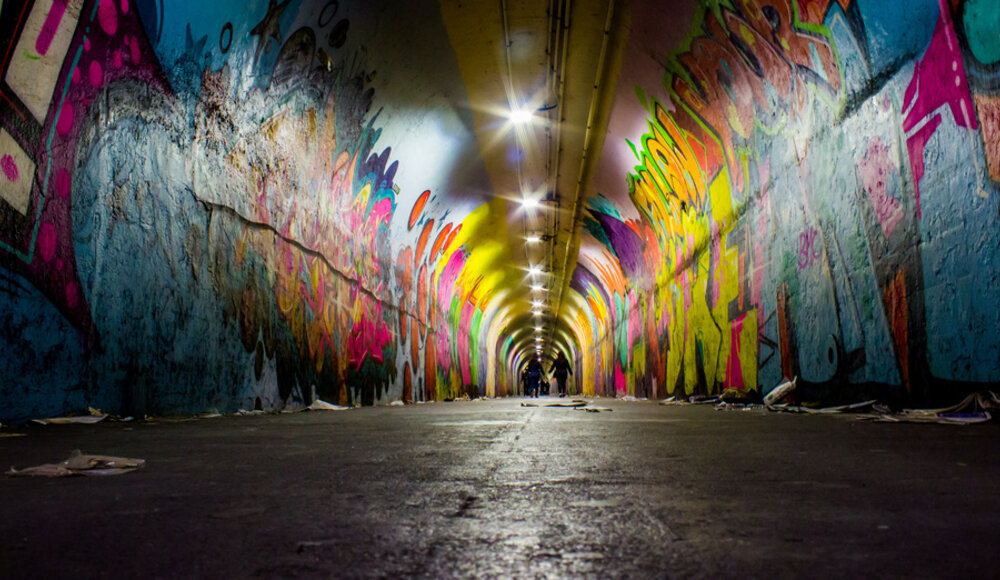Born in the United States in the 1970s, street art regroups works (images, visual signatures) created in the street, other than graffiti style writing (signatures).
Recently legitimized by the art market, it has a strong public enthusiasm, echoed by digital technologies.
Street art is an ephemeral and unsolicited art, assimilated to vandalism, inscribed on the walls, façades of buildings of the urban area. Sticking to the evolutions of contemporary society, playful or aesthetic, it aims to be seen by the crowd in order to provoke, testify or embellish its everyday life.
Street artists use different techniques:
- graffiti: aerosol bombs projecting colored and indelible painting;
-stencil: cardboard, metal sheets or cut-out x-rays reproducing patterns or figures on which painting is "bulged";
- sticker;
- "yarn bombing" or technique of knitting: multiple yarns of wool of different colors;
- tape art: adhesive tapes (brown tape art), or canvas and waterproof used by masons (duct tape art);
- three-dimensional "street installations" designed to be moved and not "damaging" the public space.
This popular art, exposed to all winds, with a vocation of identity, protest and aesthetics, has since a while entered galleries and private collections. Some of Jean-Michel Basquiat's and Bansky's achievements were simply torn from their original urban location to be auctioned off.

Many "street artists” seeking a longevity and a remuneration for their work helped produce a derivative production," living room "works inspired by their originally urban work. Even these pieces are deprived of original street art characteristics (ephemeral, in situ, free ), more and more amateurs are attracted by big names of the urban counterculture.
It is clear that information technologies (mobile and digital internet), promoting a culture of image, ephemeral, instantaneous, are powerful tools for disseminating and preserving the works of street artists. Online communities of amateur have been formed providing an audience that surpasses that of physical space.
Everyone being focused on their smartphone rather than on urban space, it is likely that in the future street artists will create directly on digital support for a digital public.
Article proposed by:



 Nicolas Sarazin
Nicolas Sarazin